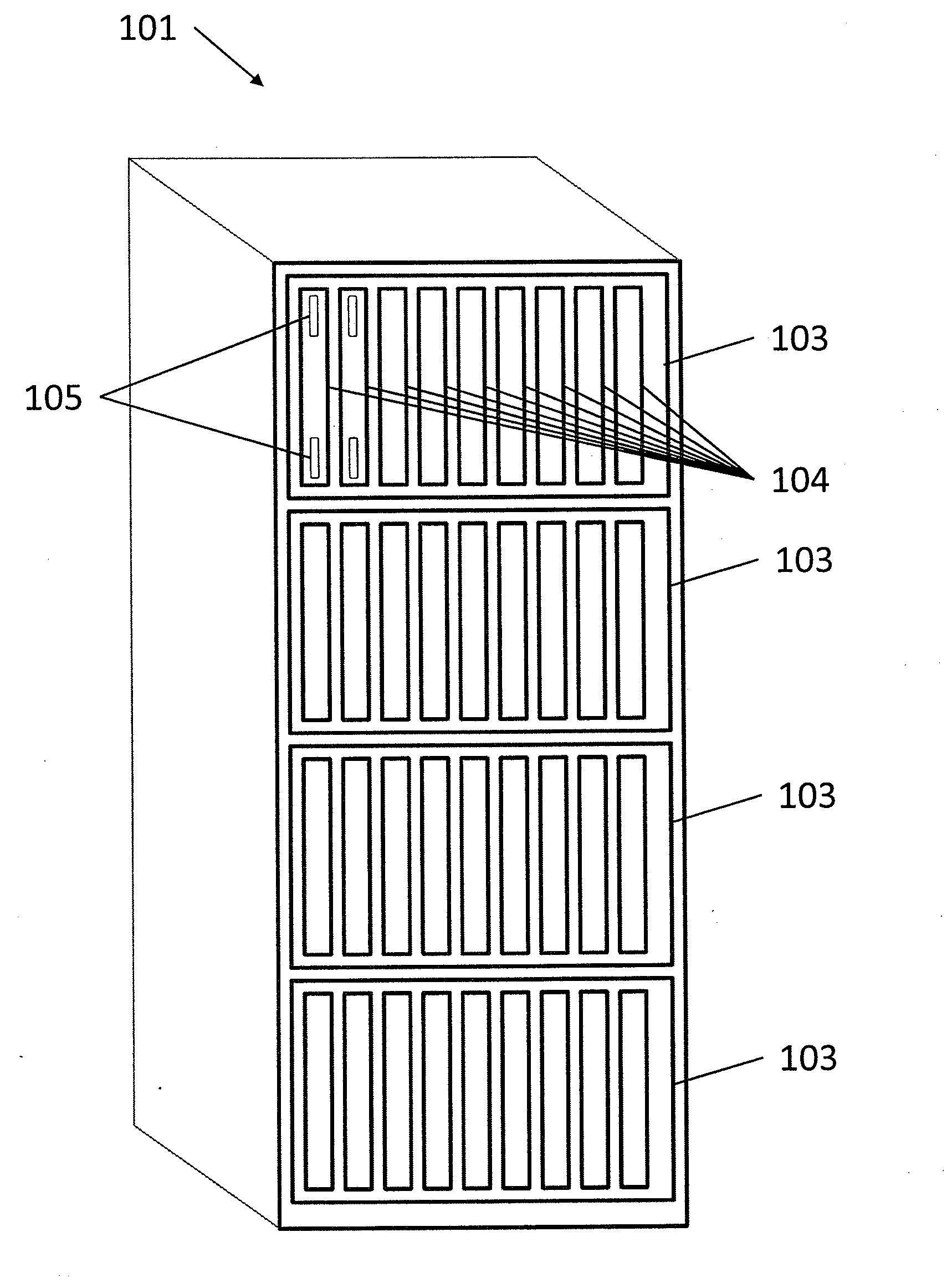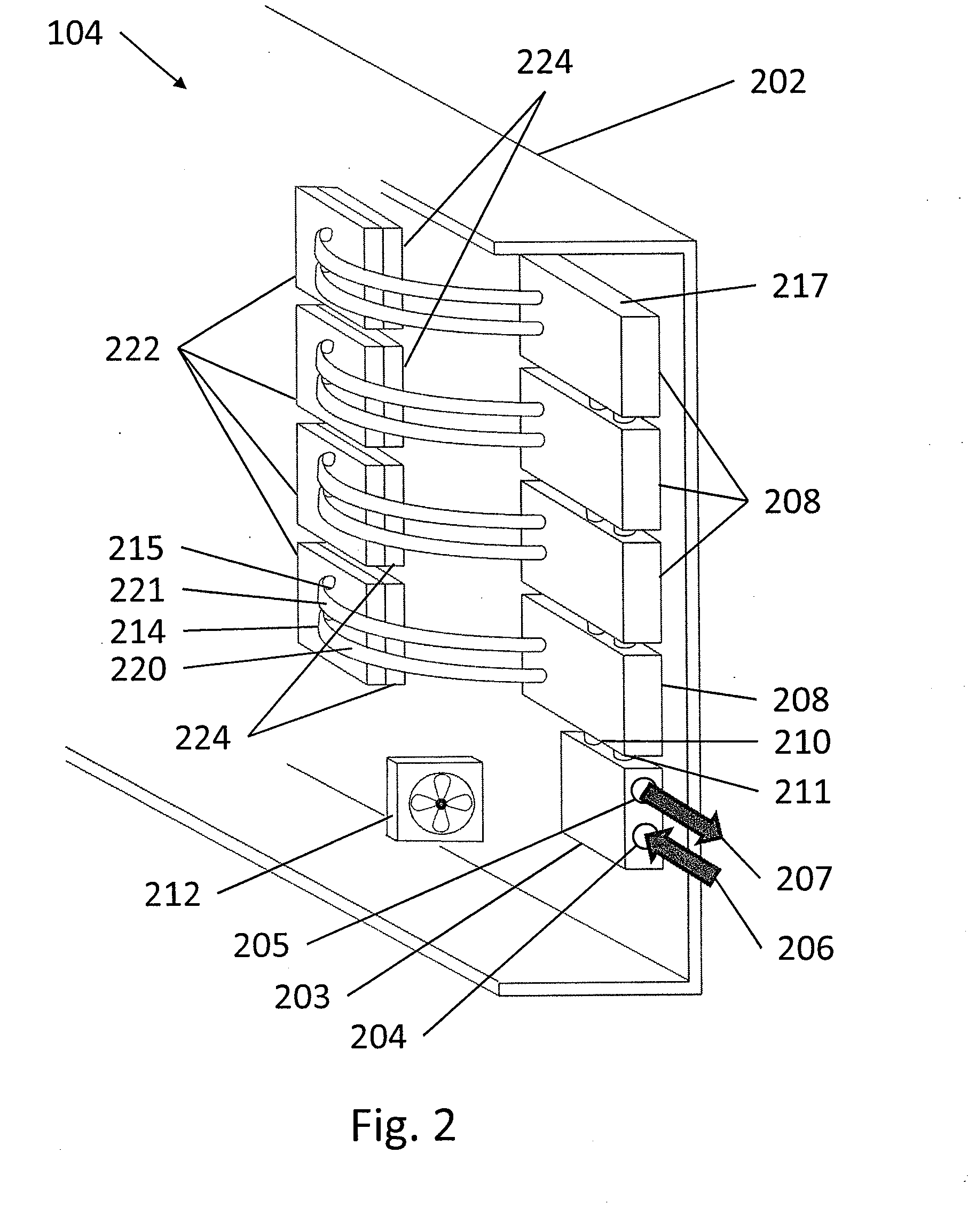Liquid-Based Cooling System For Data Centers Having Proportional Flow Control Device
- Summary
- Abstract
- Description
- Claims
- Application Information
AI Technical Summary
Benefits of technology
Problems solved by technology
Method used
Image
Examples
Embodiment Construction
[0024]Data centers and the multiplicity of types of electronics systems located therein are well known in the art. As used herein “electronics system” comprises any system containing one or more heat generating components of a computer system or other electronics unit requiring cooling. The terms “electronics rack,”“electronics frame,”“server cabinet,” and “frame” are used interchangeably, and include any housing, rack, compartment, blade chassis, etc., having heat generating components of a computer system or electronics system. In one embodiment, an electronics frame comprises multiple blade chassis, each chassis having multiple server blades, each server blade having multiple heat generating components disposed therein requiring cooling. “Blade chassis” refers to any sub-housing, electronics drawer, book, drawer, note compartment, etc., having multiple heat generating electronic components disposed therein.
[0025]“Electronic component” refers to any heat generating electronic comp...
PUM
 Login to View More
Login to View More Abstract
Description
Claims
Application Information
 Login to View More
Login to View More - R&D
- Intellectual Property
- Life Sciences
- Materials
- Tech Scout
- Unparalleled Data Quality
- Higher Quality Content
- 60% Fewer Hallucinations
Browse by: Latest US Patents, China's latest patents, Technical Efficacy Thesaurus, Application Domain, Technology Topic, Popular Technical Reports.
© 2025 PatSnap. All rights reserved.Legal|Privacy policy|Modern Slavery Act Transparency Statement|Sitemap|About US| Contact US: help@patsnap.com



